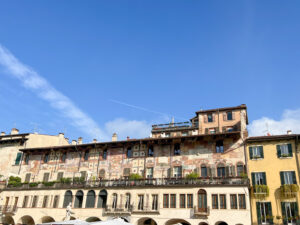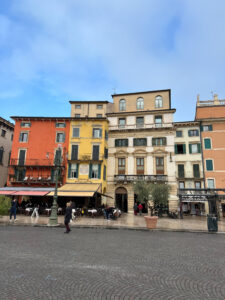

Part of me had been waiting for Italy for my entire trip. I’d dipped into Italy for a few days back in August to spend a night in Como and then 3 nights in La Spezia near Cinque Terre—places that I wanted to see in summer weather and that made geographic sense for my train route through the Alps—but I’d planned to come back for more once the weather was cool, crowds were thin, and prices were lower. August had been a sample, and I was back for the full experience.
It was hard to decide where to go in Italy. Even if I’d spent the entire 90 days that I was allowed in the Schengen zone in Italy, it still wouldn’t have been long enough to see everything in the country that I want to see. A year wouldn’t have been enough. I only had a couple of weeks, so I decided to aim for a balance between places I’d never been before and places that I hadn’t visited in a decade and wanted to return to for the first time as a solo traveler. I started in Verona.
I took a bus from Ljubljana to Venice and then took a train the rest of the way. It felt like it had been days instead of months since I’d been in the Venice train station about to get on the nightmare night-train to Vienna. Trains run continuously between Venice and Verona, so I got on one right away and took a taxi from the Verona station to my hostel. It was the first time since Bucharest that I was staying in a shared room in a hostel, and before Bucharest, I hadn’t stayed in a dorm room in a hostel since before Michael joined me 3 months before. Being back in Western Europe meant that dorm beds in shared rooms would now cost as much (or more) as the privates had cost in Eastern Europe. But the nice thing about hostels in the off-season is that they aren’t usually full. Hostello Hostel in Verona is unanimously considered the best hostel in town, and it didn’t disappoint. The hostel cat, Mercutio, greeted me, and the staff told me all the best places to eat. I had 3 roommates in my female-only 6-bed dorm room. Two of them were from the US, and one was from Mexico, and they were undoubtedly all young enough that they could have been my students in the college class I taught back home (a fact that I did not reveal to them). The conversations you find yourself having while in shared rooms in hostels are the best type of surprise. Somehow you find yourself sitting on the top bunk of a bunk bed discussing the education system in the US, global politics, and the new season of Love is Blind until 1:00am.

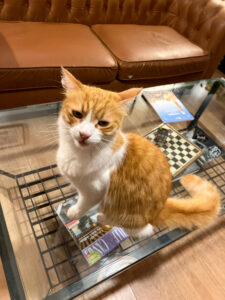

I did a walking tour of Verona the next morning to learn more about the history of the city. I was surprised at how little I knew. I hadn’t realized the extent to which I equate Italian history with Roman history (and to a lesser degree, Venetian history), but Verona felt like a practically different country. After it was a Roman colony, it was a Venetian one, and then more recently, part of the Austro-Hungarian Empire. It was the target of a lot of air raids during World War II and ended up being one of the most bombed cities in Northern Italy. But one thing that made me feel like I couldn’t be anywhere but Italy was the giant amphitheater that sits in the center of town. It was built in the year 30 AD. It’s remarkably well-preserved, and concerts (acts like Paul McCartney, Bjork, and One Direction) and operas are still regularly performed there for audiences of more than 20,000 people. The opera series had just ended for the season, but I would have paid a lot of money to see a show there if I could.
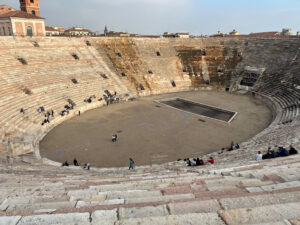

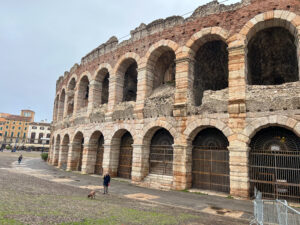
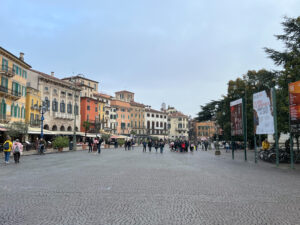
On my first night, I ate at local trattoria that my hostel recommended, and I was HORRIFIED to see both donkey and horse on the menu. Apparently this is common in a few regions of Northern Italy, but I had no idea. I continued to see both items in every restaurant I visited, often as a special, and I made sure to translate any menu word I didn’t know AND confirm what meat was in my meal with my waiter each time I ordered. To be honest, just knowing that the items were on the menu creeped me out even after I confirmed with the waiters what I was ordering. I thought a lot about why this was and whether people should feel any different ethically about eating horse or donkey instead of cow or pig. And the answer is of course not. Of course it’s not different. Seeing wild boar on the menu in Tuscany didn’t bother me, and why didn’t it? It’s not morally different. Society determines for us what’s normal and then conditions us to believe it is objectively true.
But I’m going to confess something controversial here, and I ask for your forgiveness if you find this blasphemous—I really didn’t care for the food in Verona. These are words I never imagined I’d say about ANY Italian city. But it was not just a matter of the horse and donkey issue. Perhaps I just ate the wrong things? I ate exactly two things in Verona that reminded me that I was in the country of culinary bliss: a pumpkin ravioli with hazelnut butter which tasted like the pumpkin spice latte of pastas and a vegan almond flavor gelato that I still think about more than I will publicly admit to. Generally though, if you’re dreaming of Italian feasts, Verona would not be my first recommendation.
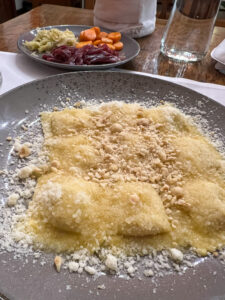

Verona is probably most famous for being the setting for Shakespeare’s Romeo and Juliet. Even though there really were two families who lived in the region of Verona with the last names Capulet and Montague, the families were not contemporaries of one another and there was never a feud between them. Romeo and Juliet were entirely fictional characters. Shakespeare didn’t even come up with the story himself—it was a retelling of a story that several writers had retold before him, like the 1500s version of fanfiction. But this hasn’t stopped Verona from taking advantage of the fanfare and inviting tourists to come stand on the “Juliet balcony” for a fee (a balcony basically glued onto a house that the Capulet family supposedly owned). And though Romeo and Juliet might be the least romantic story I can imagine, the city is still marketed to tourists as the “City of Love.” Isn’t that Paris, you ask? It seems there’s more than one.
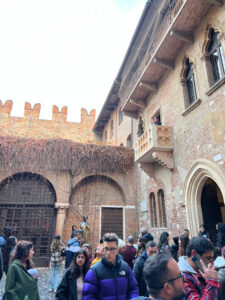
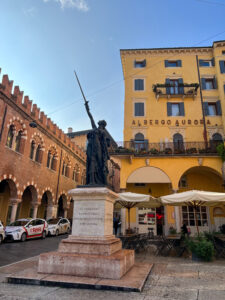
Instead of seeing the underwhelming Juliet balcony, I highly recommend climbing to the top of Colle San Pietro, Saint Peter’s Hill, for the best view in the city. This hill was the oldest original settlement in Verona, and in the Roman age, it was called “Rooster Mountain” which brings me a lot of joy. From the top of the hill, you can see the entire panoramic view of the city below. I went up for sunset, but it was too cloudy to see the sun, so the city looked moody and atmospheric instead, which felt appropriate. Verona felt like the kind of beautiful and stylish Italian city that feels its emotions dramatically.
Being back in Western Europe meant shared dorm rooms and strict budgets, but it also meant high speed trains and easy transportation that didn’t require planning in advance. After spending a couple nights in Verona, I headed to the train station to catch an hour-long train to Bologna.
